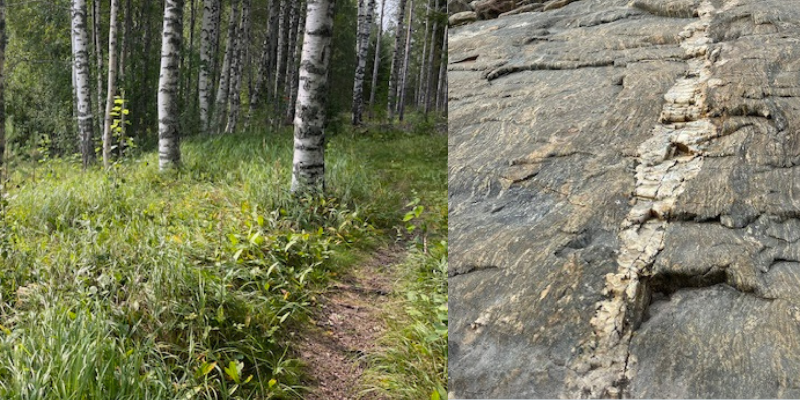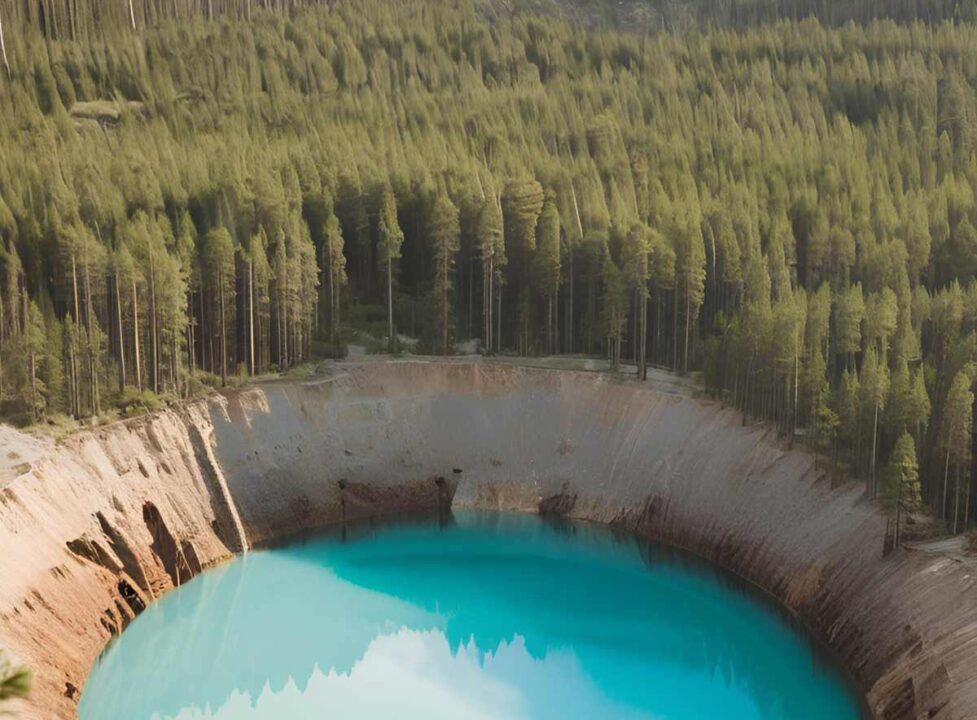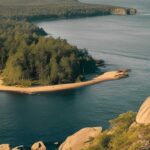In the heart of Sweden’s Höga Kusten, nestled deep in the forested landscapes, lies the forgotten beauty of Edsele Gruva. This former mining site, once a bustling hub for extracting quartz and feldspar, has long since been abandoned, leaving behind a captivating and serene environment that draws adventurous visitors from near and far.
History and transformation
Edsele Gruva was operational between 1965 and 1983, during which time it played a significant role in the local industry. The quartz extracted from this mine was primarily used in the production of glass, while the feldspar found its way into ceramics and welding electrodes. However, after the closure of the mine, the site was left to nature’s devices, gradually filling with water and transforming into a unique, turquoise-hued lake.
Natural allure
Today, the abandoned mine has become a hidden gem within the Höga Kusten region, renowned for its strikingly clear turquoise water. The color, which contrasts vividly with the surrounding rocky terrain and dense forests, is a result of minerals left behind from the mining process. The isolated location, reachable via a narrow gravel road, adds to the sense of discovery and adventure for those who make the journey.

Visiting Edsele Gruva
While the site is remote, it has gained popularity among outdoor enthusiasts. The rugged landscape around the mine offers opportunities for hiking, with trails leading to breathtaking vantage points that overlook the water-filled pit. Visitors often enjoy a refreshing swim in the cool waters, though it is recommended to do so with caution due to the steep and rocky surroundings. During the summer months, the access road to the mine is typically open, making it easier for visitors to explore this secluded spot. However, the journey to Edsele Gruva is as much a part of the adventure as the destination itself, taking travelers through the tranquil forests of Västernorrland, past lakes and scenic viewpoints that highlight the natural beauty of the region. Edsele Gruva is not just a destination; it is a testament to how nature can reclaim and transform industrial sites into places of unexpected beauty and tranquility, offering a peaceful retreat for those willing to seek it out.





